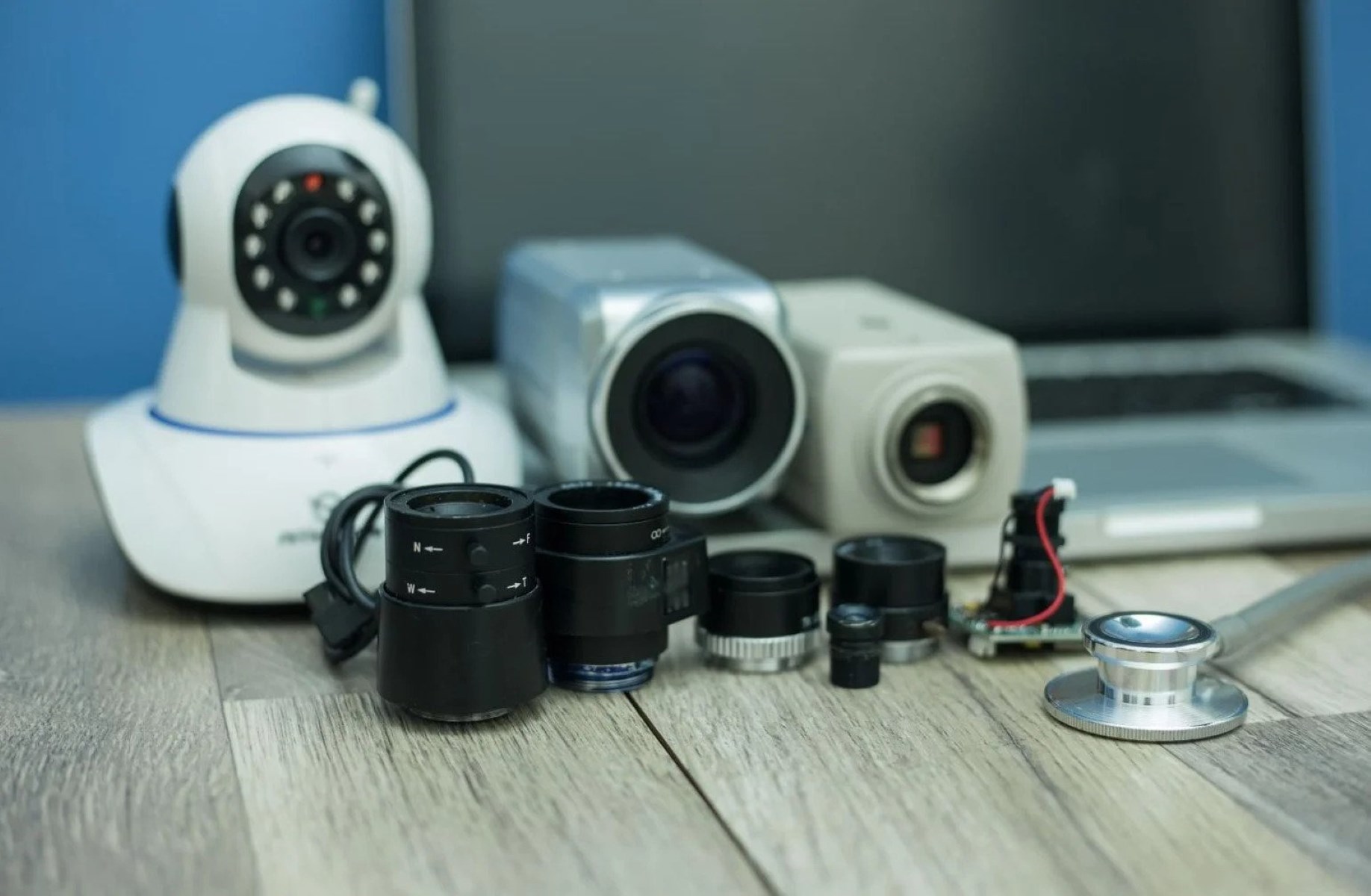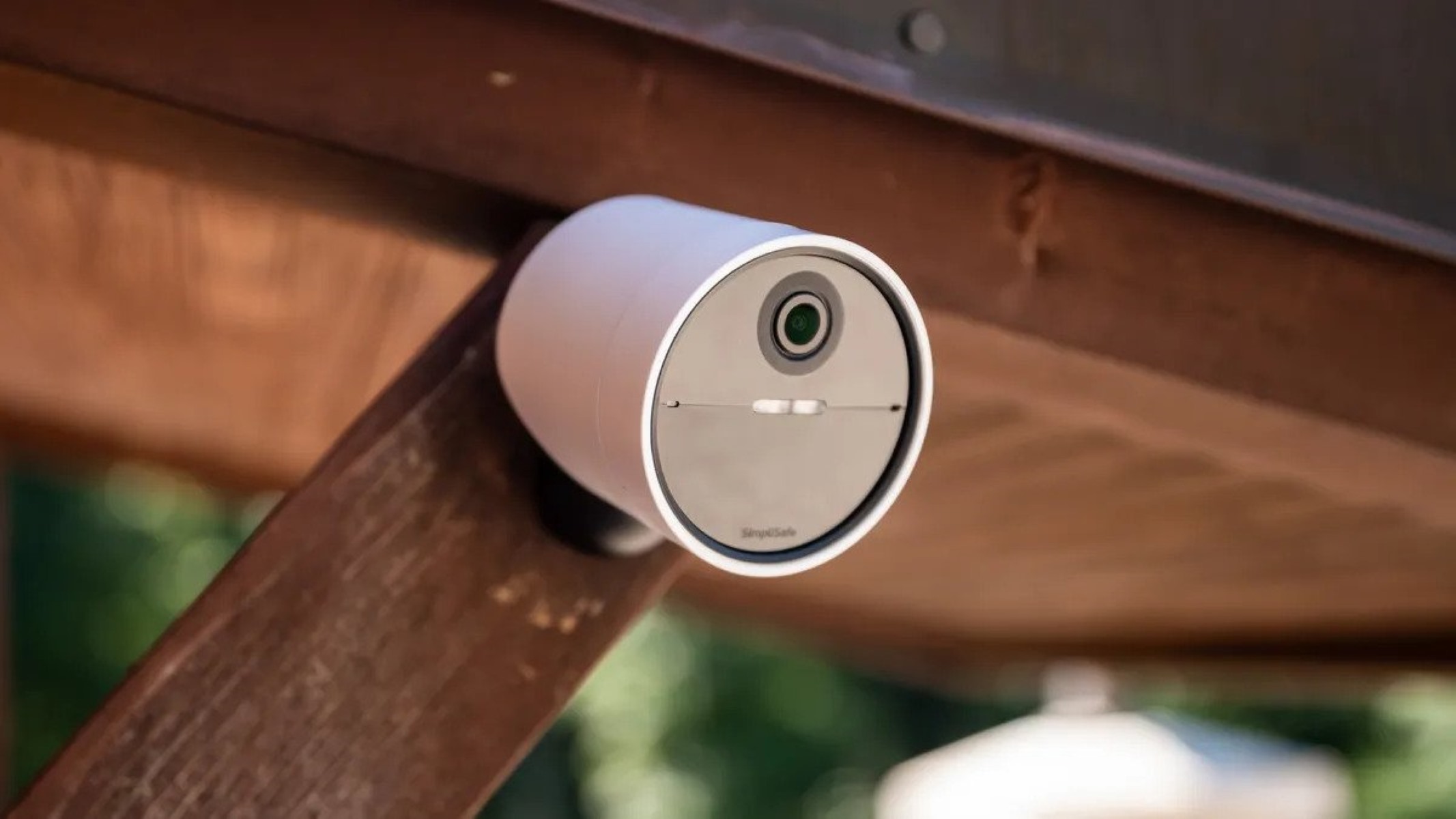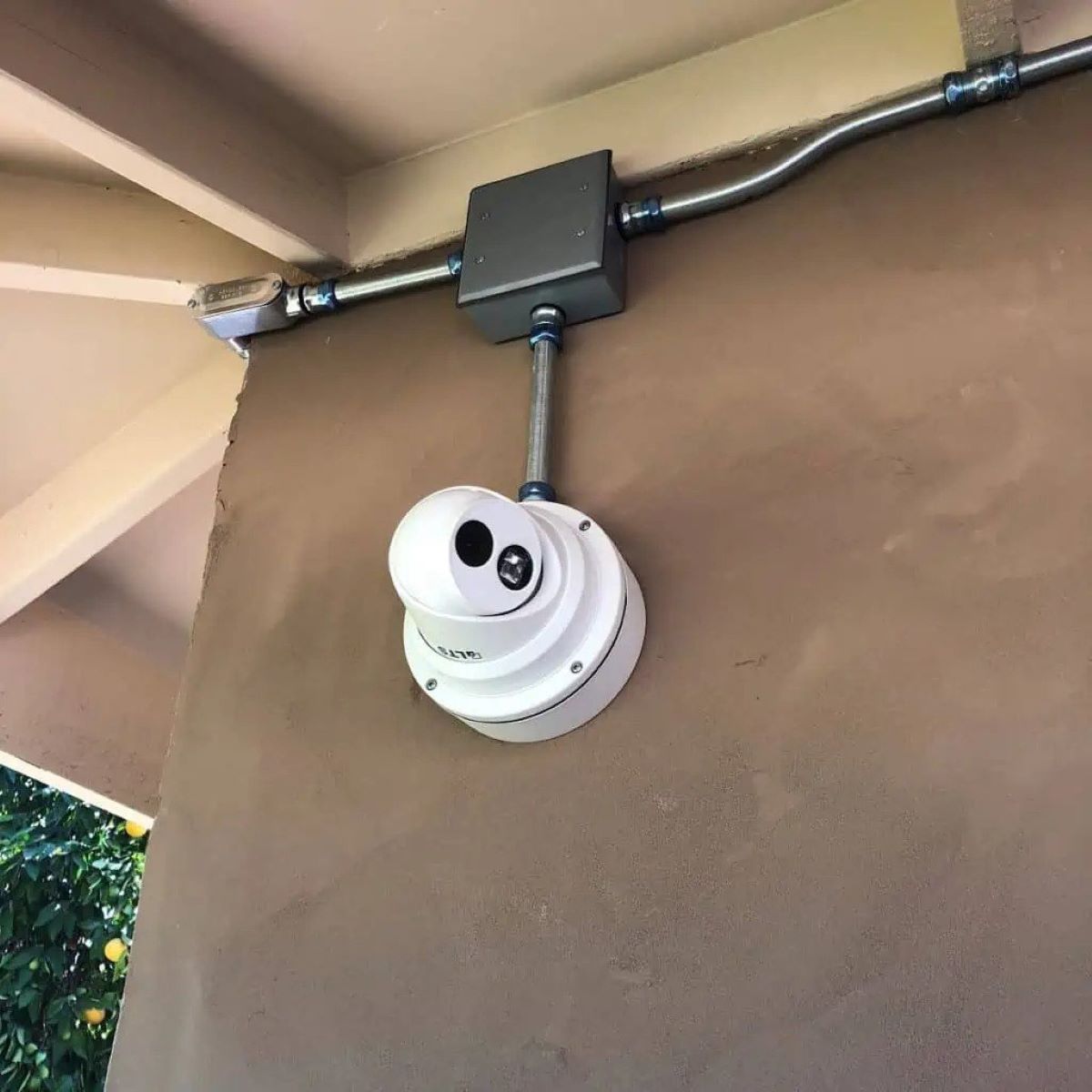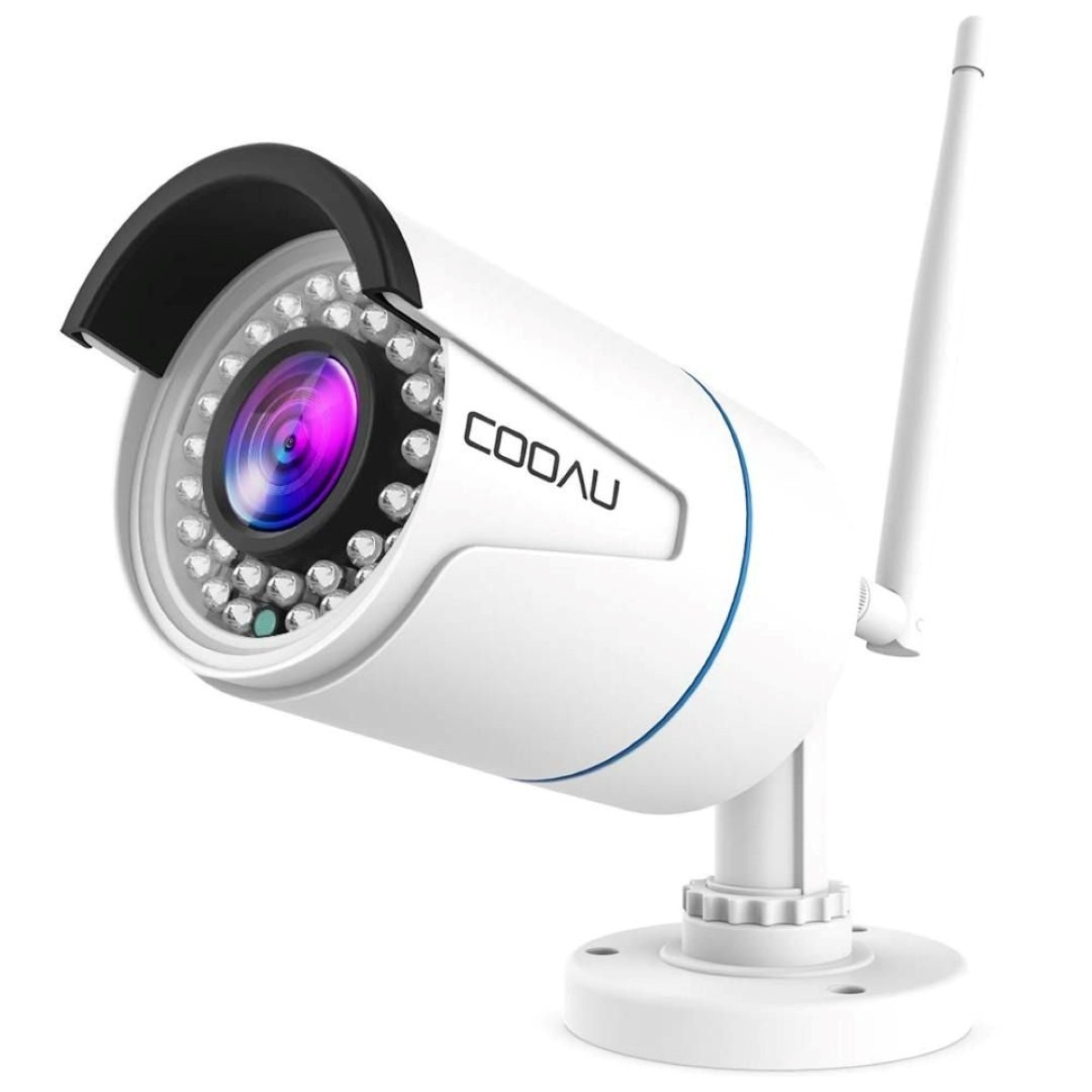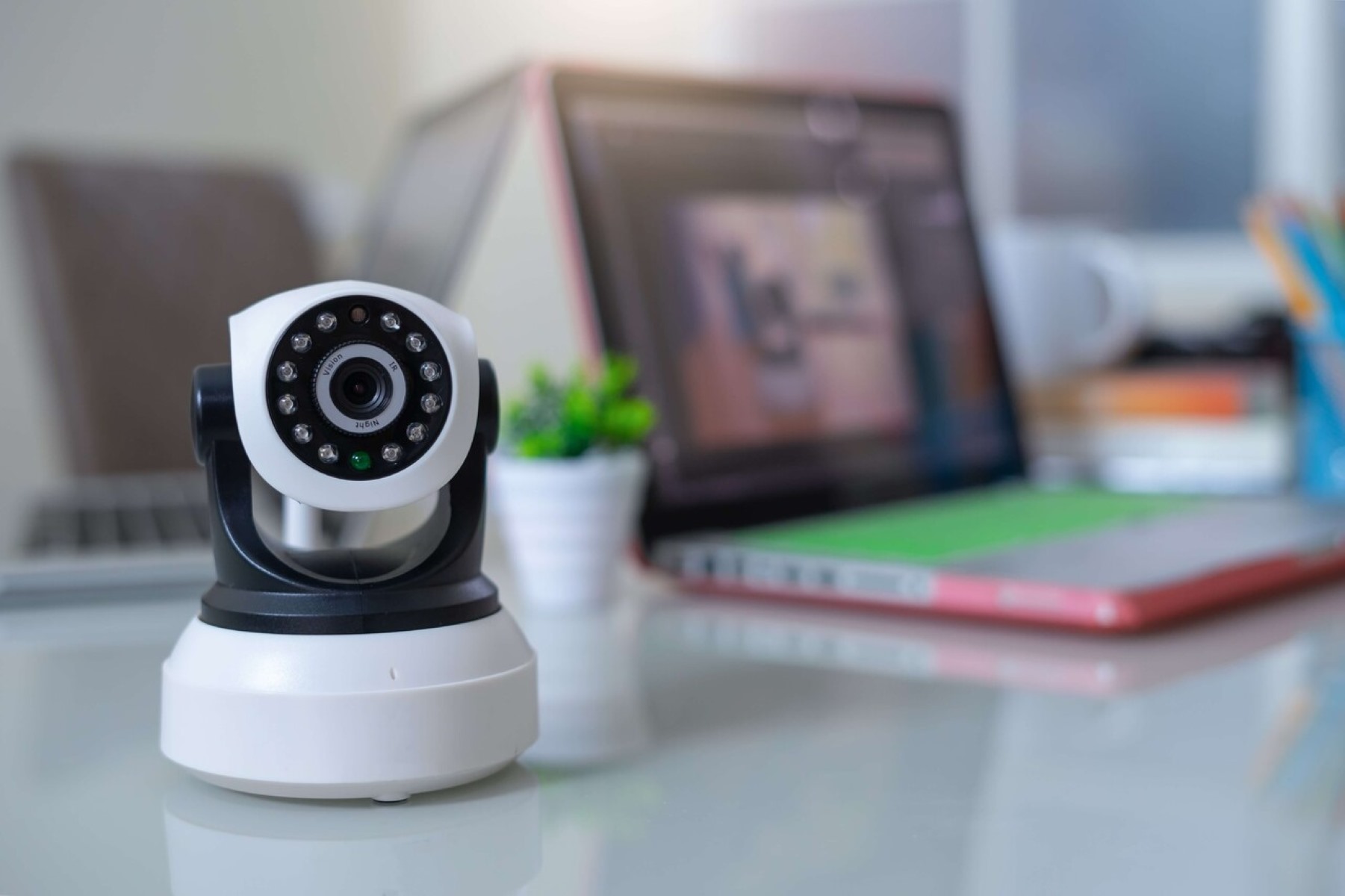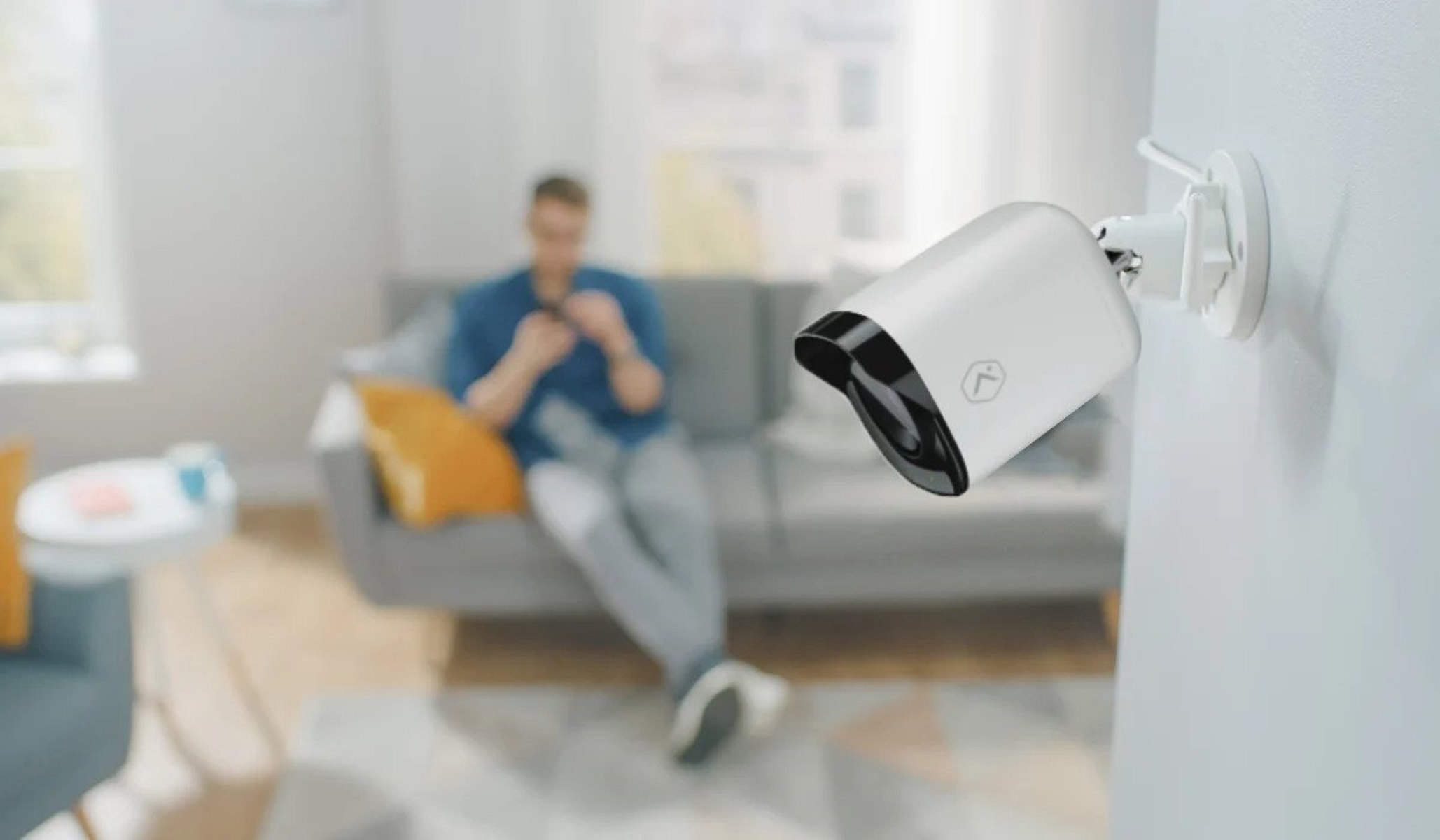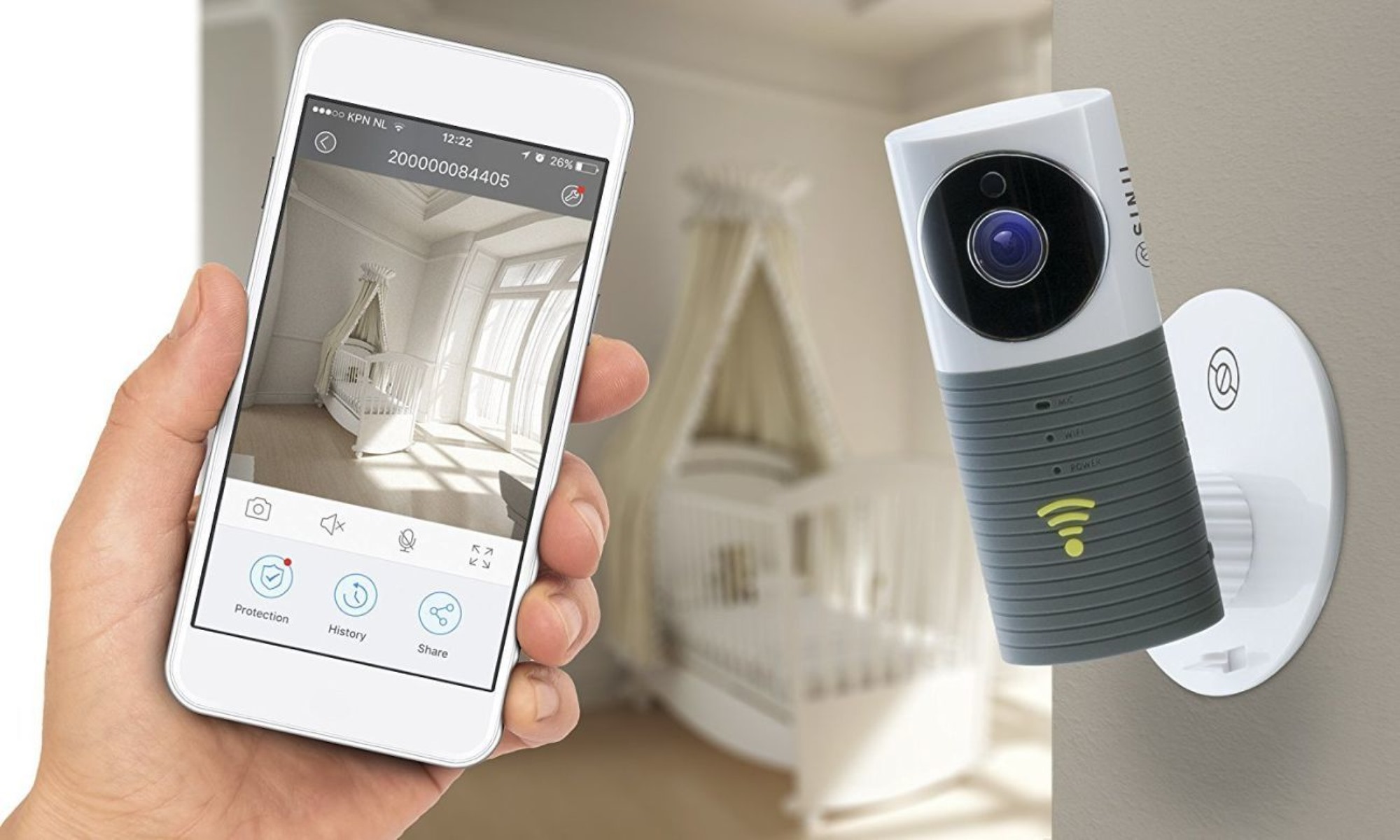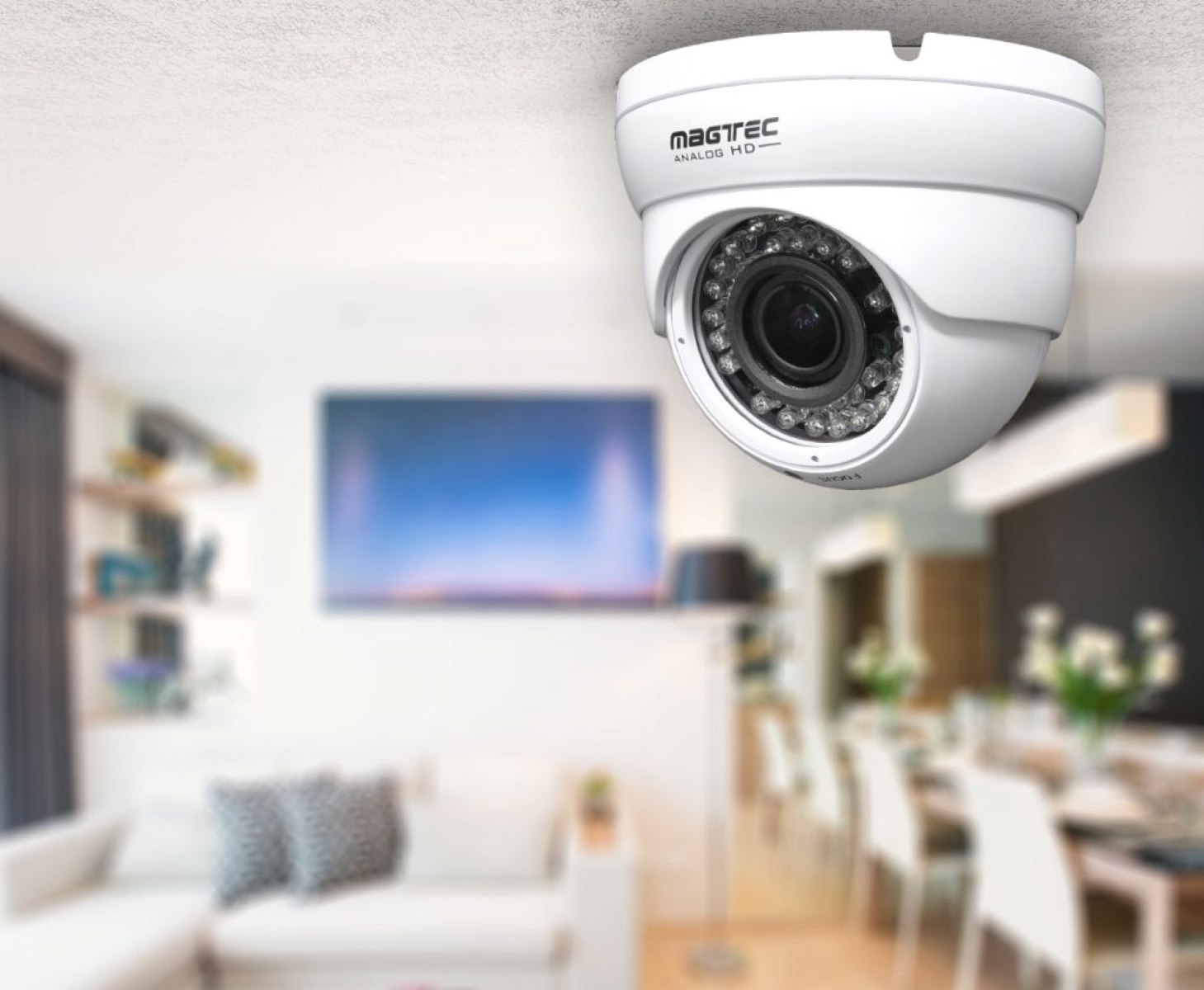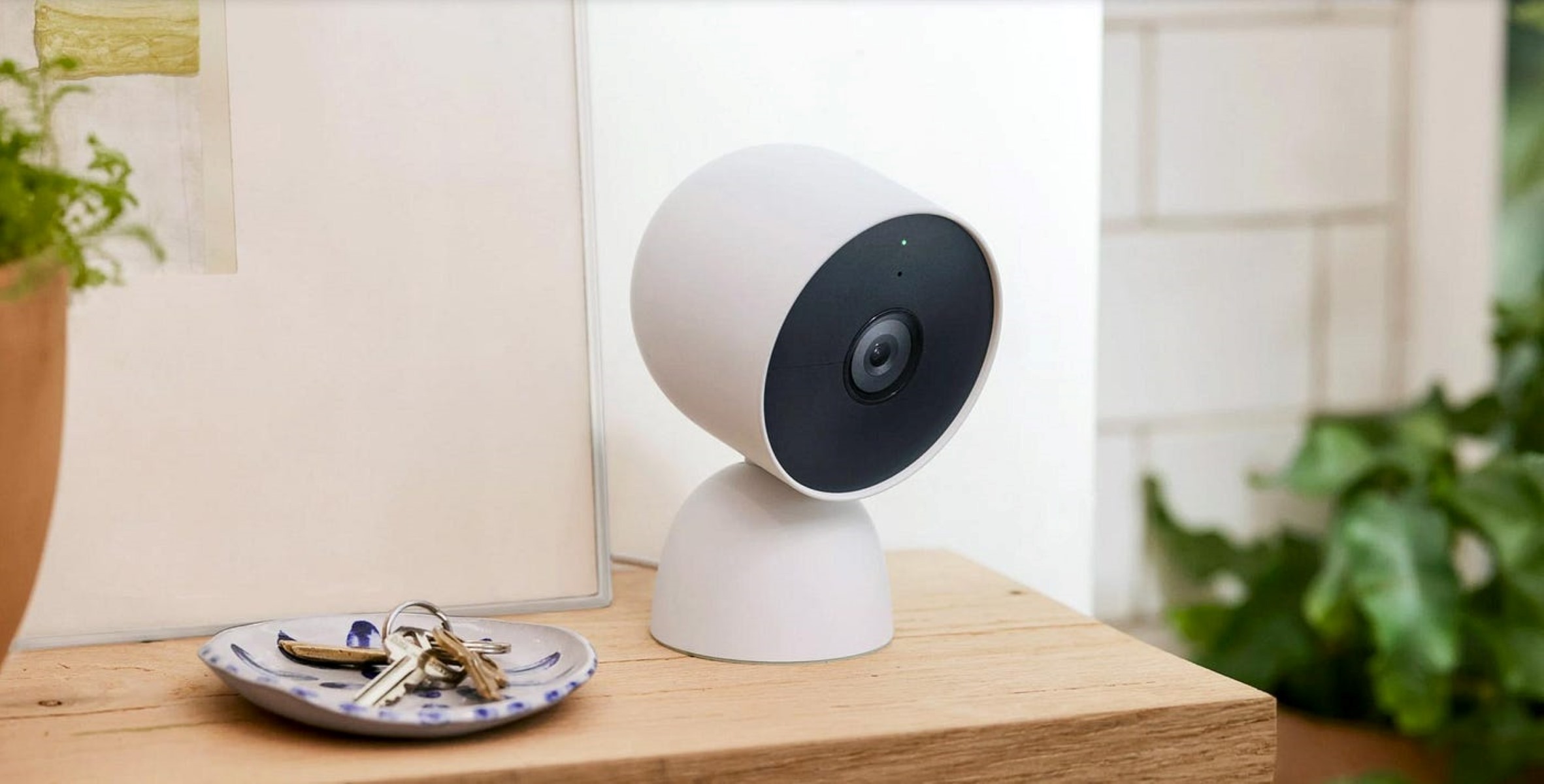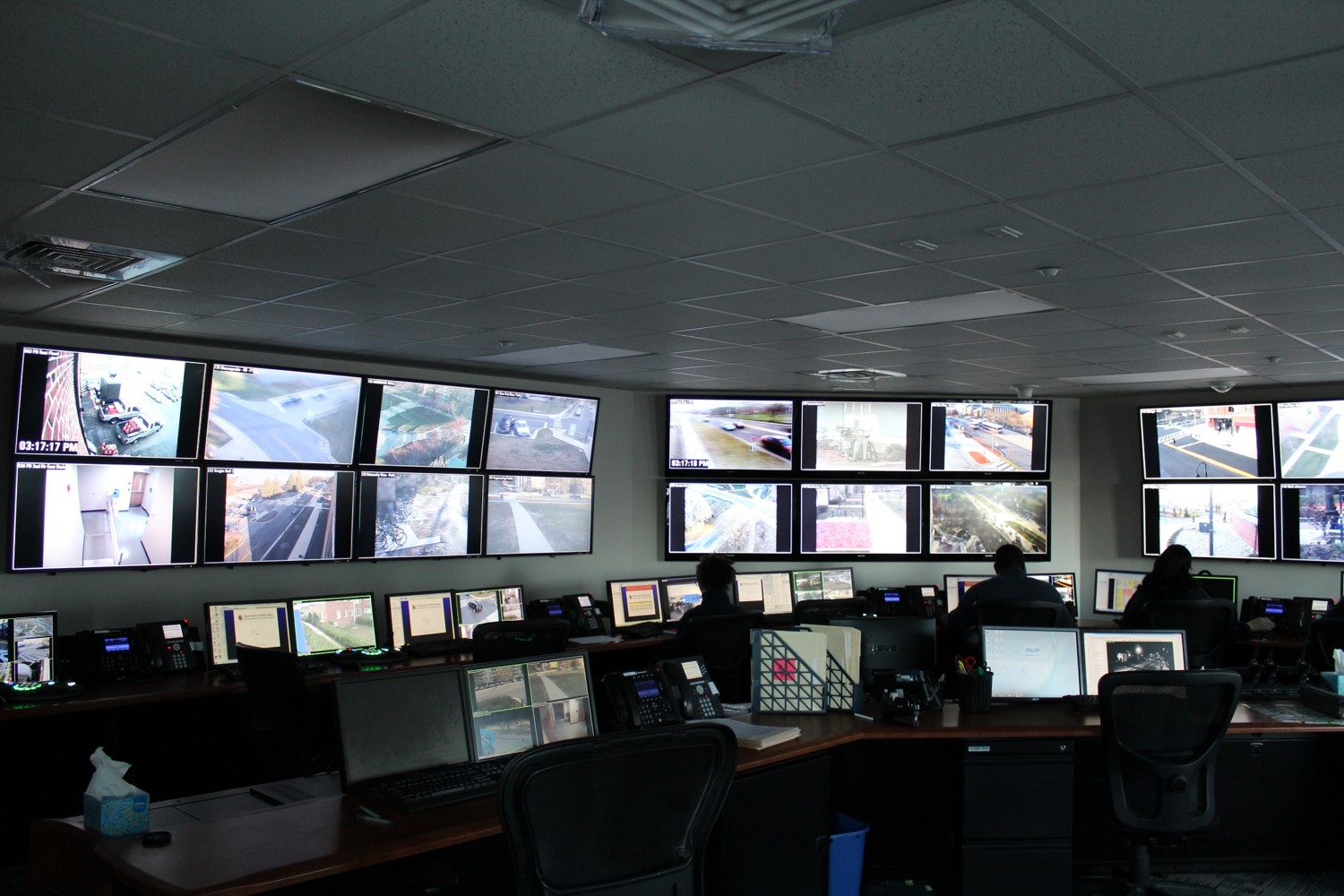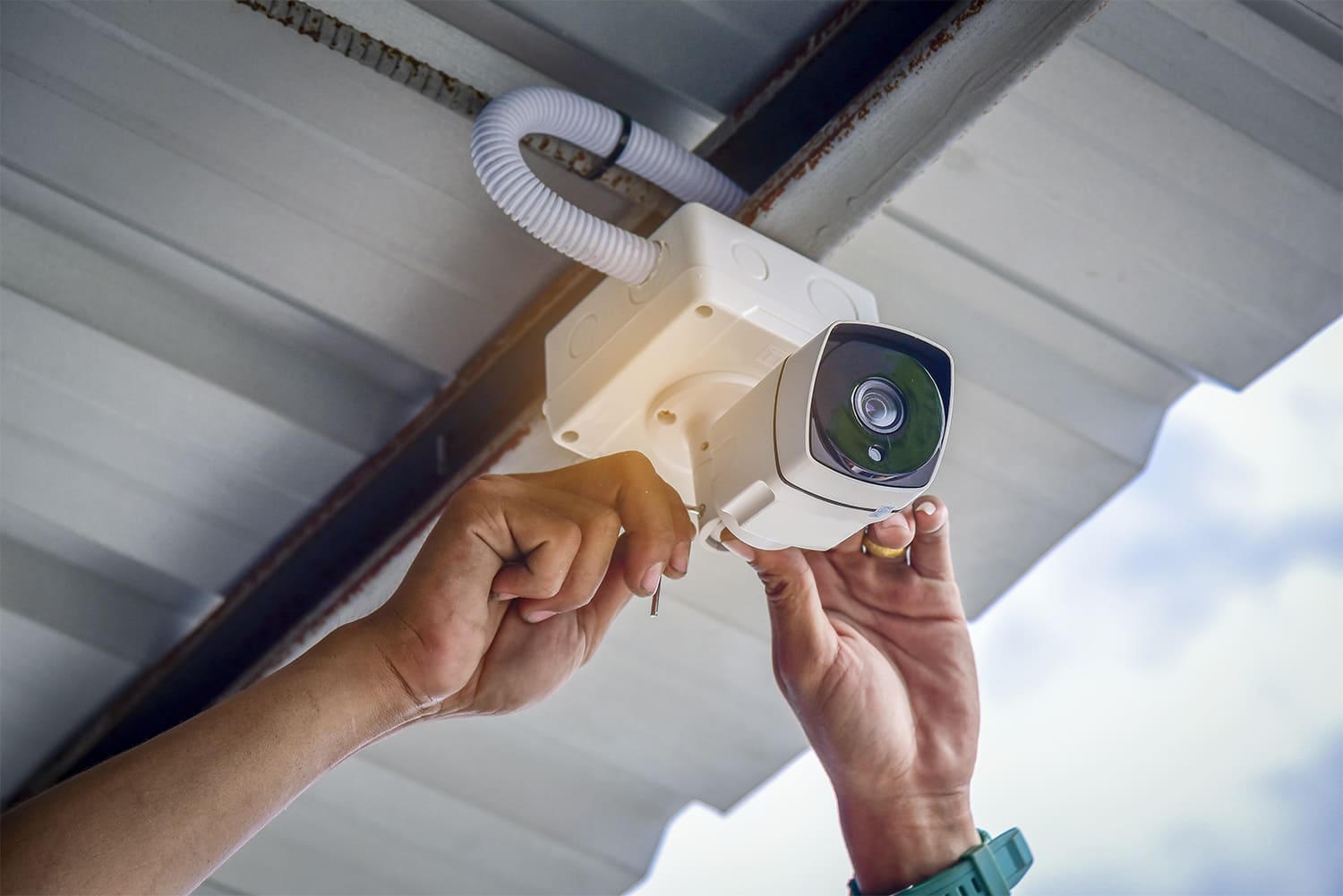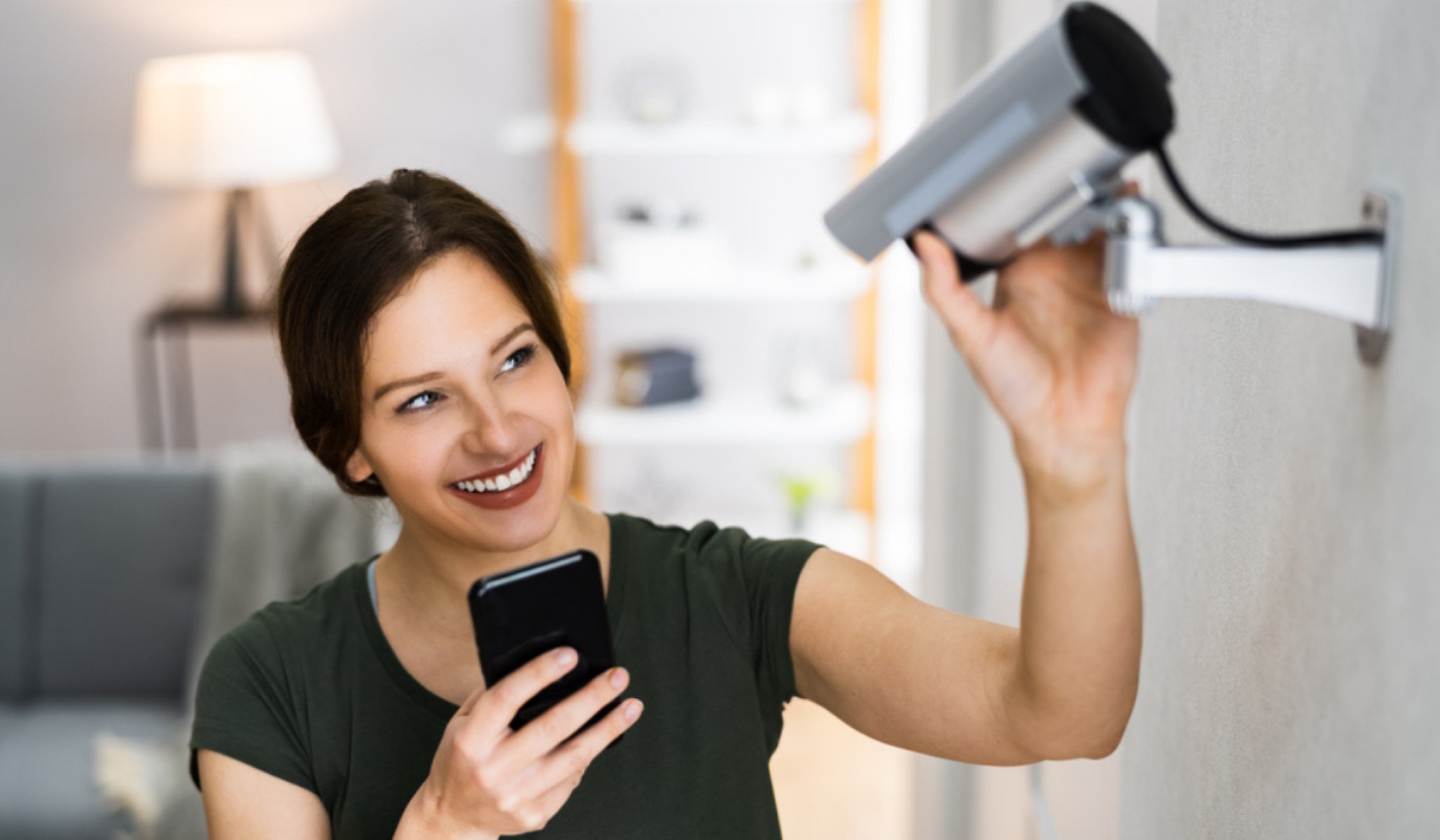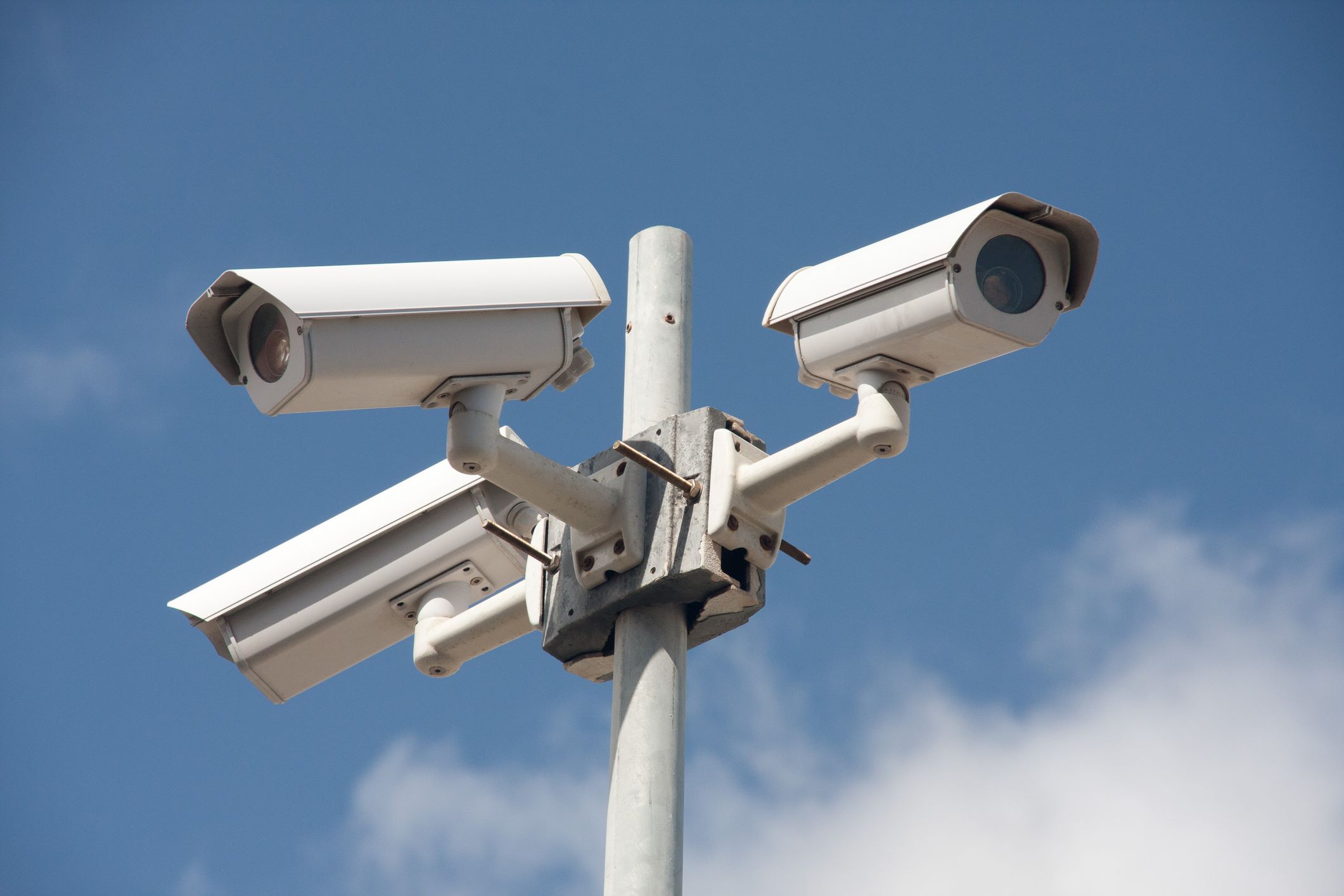Home>Home Security and Surveillance>How To Secure Home CCTV
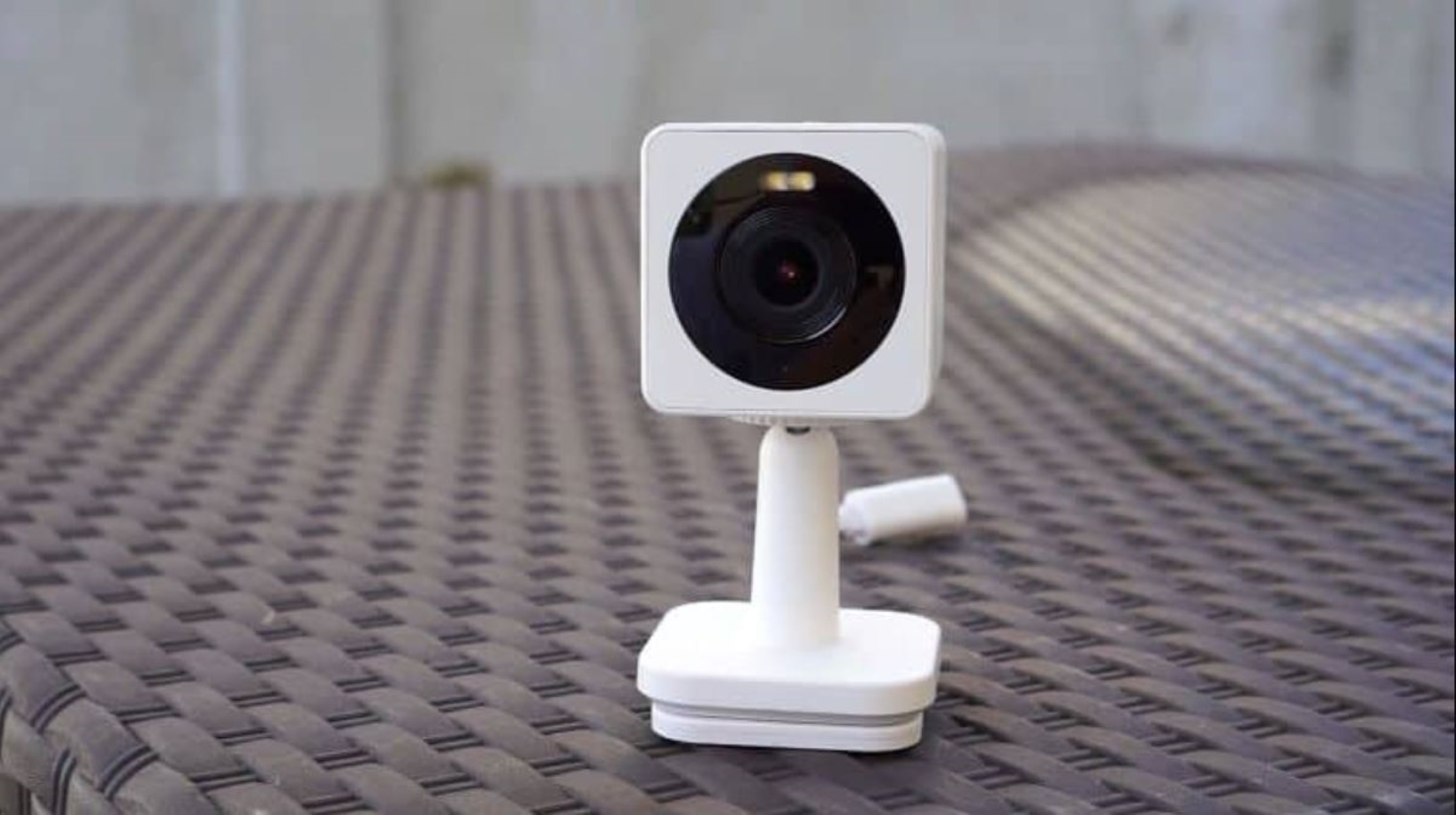

Home Security and Surveillance
How To Secure Home CCTV
Modified: March 6, 2024
Learn the essentials of home security and surveillance with this comprehensive guide. Discover effective strategies to secure your home CCTV and protect your property.
(Many of the links in this article redirect to a specific reviewed product. Your purchase of these products through affiliate links helps to generate commission for Storables.com, at no extra cost. Learn more)
Introduction
Welcome to the world of home security and surveillance! In today’s fast-paced and technology-driven society, ensuring the safety and security of our homes has become a top priority. One of the most effective ways to achieve this is by installing a comprehensive CCTV (Closed-Circuit Television) system.
CCTV systems provide homeowners with the ability to monitor and record activities in and around their property. These systems act as a deterrent to potential criminals while providing valuable evidence in the event of a security breach. The advancements in technology have made CCTV systems more accessible, affordable, and user-friendly than ever before.
In this article, we will delve into the importance of home CCTV security, discuss how to choose the right CCTV system for your needs, explore the best practices for installation and placement of CCTV cameras, and provide valuable tips for securing your cameras and ensuring optimal functionality. So, let’s get started!
To make the most of your home CCTV system, it’s essential to understand the key factors that contribute to its effectiveness and functionality. By following best practices and making informed choices, you can maximize the benefits of your CCTV system and enjoy the peace of mind that comes with knowing your home is secure.
Whether you live in a standalone house, an apartment, or a gated community, implementing a robust home security system is crucial. Let’s explore the importance of home CCTV security in the next section.
Key Takeaways:
- Installing a home CCTV system is crucial for deterring criminals, providing evidence, and ensuring remote monitoring. It also contributes to neighborhood safety and enhances protection for children and elderly family members.
- Choosing the right CCTV system, proper placement and installation of cameras, securing equipment, and integrating with home security systems are essential for creating a comprehensive and effective home security solution.
Read more: What Is CCTV Security Cameras
Importance of Home CCTV Security
The importance of home CCTV security cannot be overstated. With the rise in property crimes and burglaries, having a CCTV system in place provides an added layer of protection for your home and loved ones. Here are a few reasons why home CCTV security is essential:
- Deterrence: One of the primary benefits of CCTV systems is their ability to deter potential criminals. The presence of visible cameras acts as a deterrent, as intruders are less likely to target a home that is under surveillance. The fear of being caught on camera and the risk of getting identified increases the chances of burglars moving on to an easier target.
- Evidence: In the unfortunate event of a security breach, having recorded footage from CCTV cameras can provide valuable evidence to law enforcement agencies. This evidence can be crucial in identifying and apprehending the culprits, as well as in supporting insurance claims. Additionally, the footage can be used in court proceedings to ensure justice is served.
- Remote Monitoring: Today’s CCTV systems offer the convenience of remote monitoring. With the ability to access camera feeds from your smartphone or computer, you can keep an eye on your home from anywhere in the world. This is particularly useful when you are traveling or away from home for extended periods, providing you with a sense of security and control.
- Neighborhood Safety: Home CCTV systems not only protect your property but also contribute to the overall safety of your neighborhood. By installing CCTV cameras, you help create a safer environment for everyone around you. Your cameras can capture suspicious activities or incidents that may affect the community, allowing for timely intervention and prevention of crimes.
- Child and Elderly Safety: CCTV systems can be instrumental in ensuring the safety of your children and elderly family members. By monitoring their movements in and around the house, you can help prevent accidents, detect any unusual behavior, and provide immediate assistance if needed. This added layer of protection brings peace of mind to families and caregivers.
The importance of home CCTV security extends far beyond mere surveillance. These systems offer peace of mind, enhanced protection, and a proactive approach to safeguarding your property and loved ones. However, to enjoy these benefits, it is essential to choose the right CCTV system that suits your specific needs. Read on to learn how to make an informed decision when selecting a CCTV system for your home.
Choosing the Right CCTV System
When it comes to choosing a CCTV system for your home, there are several factors to consider. Making an informed decision ensures that you select a system that meets your security requirements and fits within your budget. Here are some key factors to keep in mind:
- Camera Types: There are various types of CCTV cameras available, each serving different purposes. Dome cameras offer a wide-angle view and are suitable for indoor use. Bullet cameras are more compact and designed for outdoor surveillance. PTZ (Pan-Tilt-Zoom) cameras allow you to remotely control the camera’s movement, offering greater flexibility. Ensure that the camera types you choose align with your monitoring needs.
- Resolution: The resolution of CCTV cameras determines the clarity of the footage. A higher resolution ensures better image quality and detail. HD (High Definition) cameras are becoming the norm, with options ranging from 720p to 4K resolution. Assess your requirements and opt for cameras with suitable resolution to capture crucial details, such as faces, license plates, and other identifiable features.
- Storage: CCTV systems store recorded footage for later review. The storage capacity depends on the DVR (Digital Video Recorder) or NVR (Network Video Recorder) used. Consider the number of cameras you plan to install, the retention period for recorded footage, and whether you prefer local storage or cloud-based solutions. Choose a system that offers sufficient storage capacity to meet your needs.
- Night Vision: If you need surveillance during nighttime or low-light conditions, opt for cameras equipped with infrared (IR) or low-light capabilities. These cameras use infrared LEDs to illuminate the area and capture footage even in complete darkness. Ensure that the cameras you select offer adequate night vision range for effective monitoring in all lighting conditions.
- Remote Access: Remote access allows you to monitor your CCTV system from anywhere, anytime. Look for systems that offer remote viewing capabilities through mobile apps or web portals. This feature enables you to keep an eye on your home even when you’re away, offering convenience and peace of mind.
- Expandability: Consider future scalability when choosing a CCTV system. Determine if the system allows for easy expansion by adding additional cameras or integrating with other security devices. This flexibility ensures that your CCTV system can adapt to your changing security needs without requiring a costly overhaul.
By considering these factors, you can select a CCTV system that aligns with your security goals and provides reliable surveillance for your home. Once you have chosen the right system, the next step is to ensure proper placement and installation of CCTV cameras. Read on to learn more about this critical aspect of home CCTV security.
Placement and Installation of CCTV Cameras
The effectiveness of your CCTV system depends greatly on the proper placement and installation of your cameras. Here are some guidelines to ensure optimal coverage and functionality:
- Identify Vulnerable Areas: Take a walk around your property and identify the areas that are most susceptible to intrusion or unauthorized access. These may include entry points such as doors, windows, and gates, as well as blind spots that provide cover for potential criminals. Focus on these areas when determining camera placement.
- Consider Field of View: Each CCTV camera has a specific field of view, which determines the area it can cover. Assess the distance and angle required to capture the desired footage in each area. Consider factors such as camera placement height, lens type, and focal length to ensure adequate coverage and avoid any blind spots.
- Camera Mounting: Install cameras at strategic locations to capture the best angle for surveillance. Mount them at a height where they cannot be easily tampered with or obscured, providing a clear view of the area. Use sturdy and weatherproof mounting brackets to secure the cameras in place, ensuring they remain stable and resistant to external elements.
- Wiring and Connectivity: Pay attention to the wiring and connectivity of your CCTV cameras. Conceal the wires as much as possible to prevent tampering or accidental damage. Use protective conduits or discreet wiring options to maintain a clean and professional appearance. Ensure proper connection to power sources and follow the manufacturer’s instructions for cable routing.
- Outdoor Considerations: If you are installing cameras outdoors, choose weatherproof cameras that can withstand various weather conditions. Ensure that the cameras are protected from direct sunlight, rain, and other environmental factors that may affect their performance. Adjust camera settings and lens angles to compensate for changing lighting conditions throughout the day.
- Test and Adjust: Once the cameras are installed, test their functionality to ensure proper coverage and recording. Adjust the camera settings, including motion detection sensitivity, recording duration, and frame rate, to optimize performance. Periodically review camera footage to identify any blind spots or areas that may require repositioning for better coverage.
Proper placement and installation of CCTV cameras are crucial to effectively monitor and secure your home. By carefully considering the vulnerable areas, field of view, mounting options, wiring, and outdoor considerations, you can maximize the effectiveness of your surveillance system. In the next section, we will explore methods to secure your cameras and cables to prevent tampering and unauthorized access.
Securing Cameras and Cables
Securing your CCTV cameras and cables is vital to prevent tampering, theft, and unauthorized access. Here are some best practices to ensure the integrity and reliability of your surveillance system:
- Camera Housing: Choose cameras with sturdy and tamper-proof casings made from durable materials, such as metal or impact-resistant plastic. This helps protect the cameras from vandalism or attempts to disable them. Opt for cameras with anti-vandal features, such as dome cameras with impact-resistant domes.
- Cable Concealment: Conceal your camera cables to protect them from being cut or tampered with. Use cable conduits, raceways, or in-wall installation to hide the cables from view. This not only prevents unauthorized access but also enhances the aesthetics of your CCTV system. Be mindful of local building codes and regulations regarding cable concealment.
- Cable Protection: Protect your camera cables from external factors such as weather, rodents, or accidental damage. Use protective covers or conduit sleeves to shield the cables from exposure. Ensure that the cables are securely fastened and are not in a position where they can be easily accessed or disconnected.
- Cable Routing: Plan the cable routing to minimize the chances of interference or accidental disconnection. Keep cables away from power lines or other sources of electrical interference to prevent signal degradation. Separate data cables from power cables to avoid electromagnetic interference that may impact the quality and reliability of the footage.
- Lockable Enclosures: If your cameras are within reach, consider using lockable enclosures to protect them from tampering or theft. Lockable enclosures provide an extra layer of security and ensure that only authorized individuals can access the cameras. These enclosures are especially useful for outdoor cameras that are exposed to public access.
- Monitor User Access: Control user access to your CCTV system by assigning unique usernames and passwords to each authorized user. Regularly update and strengthen passwords to prevent unauthorized access. Restrict access privileges to critical settings and features to minimize the risk of tampering or sabotage.
By implementing these security measures, you can protect your CCTV cameras and cables from tampering, theft, and interference. This ensures the integrity of your surveillance system and provides enhanced peace of mind. However, securing the equipment alone is not enough. In the next section, we will discuss the importance of configuring passwords and user access to further strengthen the security of your home CCTV system.
Make sure to change the default password on your home CCTV system to a strong, unique password to prevent unauthorized access.
Configuring Passwords and User Access
Properly configuring passwords and user access for your home CCTV system is crucial in maintaining its security and preventing unauthorized access. Here are some essential steps to follow:
- Change Default Passwords: Many CCTV systems come with default usernames and passwords, which are well-known to potential hackers. It is essential to change these default credentials immediately after installation. Choose strong, unique passwords that combine uppercase and lowercase letters, numbers, and special characters.
- Use Two-Factor Authentication: Implementing two-factor authentication (2FA) adds an additional layer of security to your CCTV system. With 2FA enabled, users are required to provide a second form of verification, such as a unique code sent to their mobile device, in addition to their password. This helps prevent unauthorized access, even if the password is compromised.
- Create User Accounts: Assign specific user accounts to individuals who need access to your CCTV system. Create separate accounts for family members, trusted friends, or employees, and assign appropriate access privileges to each account. This ensures accountability and allows you to monitor and control who can view or modify system settings.
- Limit Admin Access: Restrict administrative access to only trusted individuals who require full control over the CCTV system. Admin accounts should be carefully managed and should have strong passwords. Regularly review and update admin access privileges to minimize the risk of unauthorized system changes.
- Regularly Update Firmware and Software: Keep your CCTV system up to date by installing the latest firmware and software updates provided by the manufacturer. These updates often include security patches and bug fixes that address vulnerabilities, enhancing the overall security of your system. Regularly check for updates and follow the manufacturer’s instructions for installation.
- Monitor Logins and Activity: Regularly review the login history and activity logs of your CCTV system. Monitor for any suspicious activity, such as multiple failed login attempts or unusual access patterns. If any suspicious activities are detected, promptly investigate and take appropriate action, such as changing passwords or reporting the incident to law enforcement.
Configuring strong passwords, implementing two-factor authentication, creating separate user accounts, limiting admin access, updating firmware and software, and monitoring system activity are crucial steps in securing your home CCTV system. By following these best practices, you can significantly reduce the risk of unauthorized access and maintain the privacy and integrity of your surveillance system.
However, ensuring the security of your home goes beyond just configuring passwords and user access. Regular maintenance, monitoring, and integration with home security systems play vital roles in a comprehensive security strategy. Let’s explore these aspects in more detail in the following sections.
Updating Firmware and Software
Regularly updating the firmware and software of your home CCTV system is essential to ensure optimal performance and maintain the highest level of security. Firmware and software updates often include bug fixes, performance improvements, and most importantly, security patches that address vulnerabilities. Here are some key reasons why you should prioritize updating your CCTV system:
- Security Enhancements: Manufacturers regularly release updates to address any security vulnerabilities or weaknesses that have been identified in their systems. By promptly applying these updates, you can protect your CCTV system from potential breaches or unauthorized access. Ignoring updates may leave your system vulnerable to cyber attacks or exploitation of known security flaws.
- Bug Fixes and Performance Improvements: Firmware and software updates not only focus on security but also address any bugs, glitches, or performance issues that may have been discovered in previous versions. Applying updates helps resolve these issues, ensuring that your CCTV system operates smoothly and efficiently. It can improve functionality, enhance video quality, and provide a better user experience overall.
- New Features and Capabilities: Firmware and software updates often introduce new features and capabilities that can enhance the functionality and usability of your CCTV system. These updates can offer improved video analytics, mobile app enhancements, or compatibility with new devices or technologies. By staying up to date, you can take advantage of these advancements and leverage the full potential of your CCTV system.
- Compatibility and Integration: Updating your CCTV system ensures compatibility with other devices and software that you may have in your home security ecosystem. It ensures seamless integration with other components such as alarm systems, smart home devices, or video management software. This integration allows for centralized control, automation, and enhanced security synergy across all connected systems.
- Manufacturer Support: Keeping your CCTV system up to date ensures that you receive ongoing support and assistance from the manufacturer. Manufacturers typically provide technical support, documentation, and troubleshooting assistance for the latest firmware and software versions. This support can be valuable if you encounter any issues or need guidance on maximizing the features and capabilities of your CCTV system.
Updating the firmware and software of your home CCTV system is a critical aspect of maintaining its security and performance. Regularly check for updates from the manufacturer, follow their instructions for installation, and configure automatic update settings if available. By doing so, you ensure that your CCTV system remains up to date, secure, and capable of meeting your evolving security needs.
Now that we have covered the importance of updating firmware and software, let’s move on to discuss the significance of regular maintenance and monitoring in optimizing the performance of your home CCTV system.
Regular Maintenance and Monitoring
Regular maintenance and monitoring of your home CCTV system are crucial to keep it functioning optimally and ensure continuous protection for your property. By implementing a routine maintenance schedule and actively monitoring the system, you can identify and address any issues promptly. Here are some key aspects of regular maintenance and monitoring:
- Check Camera Alignment: Periodically review the camera angles and adjust them if necessary. Over time, cameras may shift or get bumped, resulting in a misaligned field of view. Ensuring proper camera alignment helps maintain optimal coverage and reduces the likelihood of blind spots or areas of insufficient surveillance.
- Inspect Camera Housing: Regularly inspect the camera housing for any signs of damage, wear, or environmental issues such as moisture ingress. Check for cracks, loose connections, or corrosion. If you detect any issues, address them promptly to prevent further damage and ensure the cameras remain protected and functional.
- Clean Camera Lenses: Dirty camera lenses can significantly impact video quality and reduce visibility. Clean the lenses regularly to remove dust, dirt, fingerprints, or any other debris that may obstruct the view. Use a soft, lint-free cloth and lens cleaning solution recommended by the camera manufacturer to avoid scratching the lenses.
- Monitor Storage Capacity: Keep an eye on the storage capacity of your CCTV system to ensure uninterrupted recording. Regularly check the available storage space and adjust settings or upgrade storage if needed. Over time, archived footage can accumulate and consume valuable storage capacity, so it is essential to manage it efficiently to maintain continuous recording.
- Review and Back Up Footage: Periodically review the recorded footage to ensure it is clear and of high quality. This allows you to identify any issues or potential gaps in surveillance coverage. Additionally, create a regular backup routine to ensure that important footage is securely stored in case of system failure or the need for evidence in the future.
- Test Alarm Integration: If your CCTV system is integrated with other home security components such as alarm systems or motion sensors, perform regular tests to ensure proper functionality and synchronization. Test the connection, triggers, and alerts to verify that the system responds accurately to security events or breaches.
- Stay Informed about Security Updates: Follow the manufacturer’s updates and security advisories to stay informed about any new vulnerabilities or patches related to your CCTV system. Be proactive in applying firmware and software updates to address security concerns promptly. This helps maintain the integrity and security of your system against emerging threats.
Regular maintenance and monitoring of your home CCTV system are essential to keep it in optimal working condition and ensure reliable surveillance. By conducting camera alignment checks, inspecting camera housing, cleaning lenses, monitoring storage capacity, reviewing footage, testing alarm integration, and staying informed about security updates, you can address any issues, maintain strong security, and enjoy the full benefits of your CCTV system.
In the next section, we will discuss the integration of CCTV with home security systems to create a comprehensive and cohesive security solution for your home.
Integrating CCTV with Home Security Systems
Integrating your CCTV system with your home security system can provide a comprehensive and cohesive approach to protecting your home. By combining the strengths of both systems, you enhance your overall security and gain greater control over monitoring and response. Here are some key benefits and considerations when integrating CCTV with your home security system:
- Enhanced Surveillance Coverage: By integrating your CCTV system with your home security system, you can extend your surveillance coverage beyond just cameras. Incorporate sensors, detectors, and alarm systems to create a more comprehensive security solution. This integration allows for a unified approach to monitoring and response, providing increased coverage and better protection.
- Real-Time Alerts and Notifications: Integration enables real-time alerts and notifications that are triggered by CCTV cameras and other security devices. When a camera detects motion or a sensor is triggered, you can receive immediate alerts on your smartphone or through your security system’s control panel. This allows for quick response and the ability to assess the situation promptly.
- Seamless Automation and Control: Integration allows you to automate and control various security components in your home. For example, when a CCTV camera detects motion, it can trigger the lights to turn on automatically or activate an alarm system. You can also remotely access and control your CCTV system, monitor live feeds, and adjust settings through your home security system’s interface.
- Centralized Monitoring and Management: Integration allows for centralized monitoring and management of your entire security ecosystem. Instead of monitoring different systems separately, you can view CCTV camera feeds, manage alarms, and access other security features from a single interface. This streamlines operations, saves time, and provides a more holistic view of your home’s security status.
- Enhanced Investigation and Evidence Collection: Integration between CCTV and your home security system simplifies the process of investigating security events. With synchronized time stamps and relevant data, you can easily correlate events from different sources to reconstruct the sequence of events. This aids in evidence collection and can be invaluable in legal proceedings or insurance claims.
- Professional Monitoring and Response: Integrating your CCTV system with a professional monitoring service can offer an added layer of security. In the event of an alert or security breach, the monitoring service can assess the situation, verify the threat, and initiate the appropriate response, such as contacting the authorities or dispatching security personnel. This provides peace of mind and round-the-clock protection for your home.
When integrating CCTV with your home security system, it is important to ensure compatibility between the different components and systems. Choose security devices and systems that are designed to work together seamlessly or consult with a professional security company to ensure proper integration. Additionally, regularly test the integration and verify that the systems are functioning as intended.
By integrating your CCTV system with your home security system, you create a powerful and cohesive security solution that enhances protection, provides real-time alerts, enables automation, centralizes monitoring and management, aids in investigations, and offers professional monitoring and response. This seamless integration strengthens the security of your home and provides you with greater peace of mind.
As we conclude this article, we hope that you have gained valuable insights into securing your home through CCTV systems, choosing the right system, properly installing and placing cameras, securing cameras and cables, configuring passwords and user access, updating firmware and software, conducting regular maintenance and monitoring, and integrating CCTV with your home security system. By following these best practices, you can create a comprehensive and effective home security and surveillance solution that keeps your loved ones and property safe.
Remember, while CCTV systems are powerful tools for home security, they should complement other security measures, such as proper lighting, secure locks, and community engagement. Stay vigilant, assess your security needs regularly, and adapt your security systems as necessary to stay one step ahead of potential threats.
Conclusion
In today’s world, home security and surveillance have become paramount concerns for homeowners. Implementing a robust CCTV system not only acts as a deterrent to potential criminals but also provides valuable evidence in the event of a security breach. Throughout this article, we have explored the importance of home CCTV security and discussed key aspects such as choosing the right system, placement and installation of cameras, securing cameras and cables, configuring passwords and user access, updating firmware and software, regular maintenance and monitoring, and integrating CCTV with home security systems.
Choosing the right CCTV system involves considering factors such as camera types, resolution, storage, night vision, remote access, and expandability. Proper placement and installation of cameras ensure optimal coverage and functionality, while securing cameras and cables prevent tampering and unauthorized access. Configuring passwords, implementing two-factor authentication, and managing user access enhance the security of your CCTV system.
Regularly updating firmware and software is crucial to address security vulnerabilities, improve performance, and unlock new features. Regular maintenance and monitoring, including camera alignment, inspection of camera housing, lens cleaning, monitoring storage capacity, reviewing footage, testing alarm integration, and staying informed about security updates, help ensure the reliability and effectiveness of your CCTV system.
Integration of your CCTV system with your home security system provides a cohesive and comprehensive security solution. This integration enhances surveillance coverage, enables real-time alerts and notifications, allows for seamless automation and control, facilitates centralized monitoring and management, aids in investigation and evidence collection, and can be coupled with professional monitoring and response services.
By implementing these best practices, homeowners can create a robust security infrastructure that promotes safety and peace of mind. However, it’s important to remember that a CCTV system is just one aspect of home security. It should be complemented by other security measures such as proper lighting, secure locks, and community engagement.
In conclusion, investing in a home CCTV system is a proactive step towards safeguarding your home and loved ones. By understanding the importance of home CCTV security and implementing the best practices discussed in this article, you can create a secure environment and enjoy the peace of mind that comes with knowing your home is protected.
Stay vigilant, stay informed, and stay secure!
Frequently Asked Questions about How To Secure Home CCTV
Was this page helpful?
At Storables.com, we guarantee accurate and reliable information. Our content, validated by Expert Board Contributors, is crafted following stringent Editorial Policies. We're committed to providing you with well-researched, expert-backed insights for all your informational needs.
